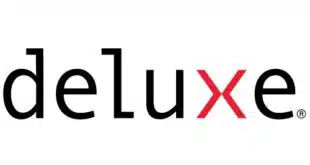Government represents one of the biggest opportunities out there for prepaid card issuers and processors, but the market is fraught with pricing, operational, and other hurdles, according to executives who work with the public sector. About $65 billion currently is loaded onto prepaid card programs for federal and state benefits programs, but The Boston Consulting Group has estimated the potential public-sector market at $160 billion in 2015, according to executives who spoke on Tuesday at the Prepaid Expo USA in Las Vegas. Big, largely untapped markets for prepaid cards include federal tax refunds and also state tax refunds, with the latter market estimated at $20 billion a year. The state of New York recently put out a request for proposals (RFP) to pay tax refunds on a prepaid card. “That's the first state we've seen do that,” Brian Greehan, vice president of global prepaid product at MasterCard Inc., tells Digital Transactions News. One of the biggest hits in public-sector prepaid cards has been the U.S. Treasury Department's Direct Express program for payment of Social Security benefits, which now has about 1 million enrollees, according to Greehan. The program includes a Comerica Bank-issued MasterCard (Digital Transactions News, July 28, 2009). On the state level, prepaid cards for payment of unemployment benefits and child support have grown rapidly in recent years, but those programs are now maturing, according to Nizam Antoo, senior business leader at Visa Inc. Antoo and other prepaid card executives see new growth coming not only from tapping state programs that still disburse benefits by check, but also local-government payments. For example, county jails disburse commissary and per-diem funds to inmates, and that niche represents an opportunity for prepaid cards, according to Matthew Frye, chief commercial services executive at prepaid card processor FSV Payment Systems Inc., Houston, which now has a number of public-sector prepaid programs. “The government business for FSV is growing pretty rapidly,” he says. While the growth opportunities seem clear, future profitability is uncertain. Network-branded government prepaid cards generate revenues mostly from interchange, consumer fees that typically are limited by contract with the sponsoring agency, and some smaller, miscellaneous streams. But cash-strapped state agencies are now seeking revenue-sharing agreements in some cases, and others are seeking relief for consumers at a time when prepaid card fees draw considerable criticism in the general press. “Margins are becoming very compressed,” says Antoo. In its new RFP for an unemployment-compensation card, California wants a program in which deposits into a prepaid account are made weekly and the cardholder would get two free ATM withdrawals per week. The usual arrangement is one free ATM withdrawal per deposit period, according to Greehan. Taken to its extreme, reduced profitability could cause prepaid card issuers and processors not to bid on programs, forcing states to revert to cutting checks to disburse benefits, Antoo says. “We're spending a lot of time educating them [public officials] on that point,” he says. Visa-branded prepaid benefits cards are offered in 39 states for 71 programs. Meanwhile, prepaid card executives say cost savings could be gained if state governments loaded benefits onto one card to those consumers who receive payments from multiple programs. Only a few states do that, including Utah and Oklahoma, the latter of which pays benefits from at least six programs on one card, says Greehan. Not just efficiencies but greater customer loyalty and utility await if consumers could add value from other sources to their government prepaid cards, according to FSV's Frye. So far, however, public officials have been cool to that idea, he says.
Check Also
Mastercard Looks to Support Stablecoins in a Deal With Wallet Provider MoonPay
The big card networks have worked for several years to exploit the growing business of …





